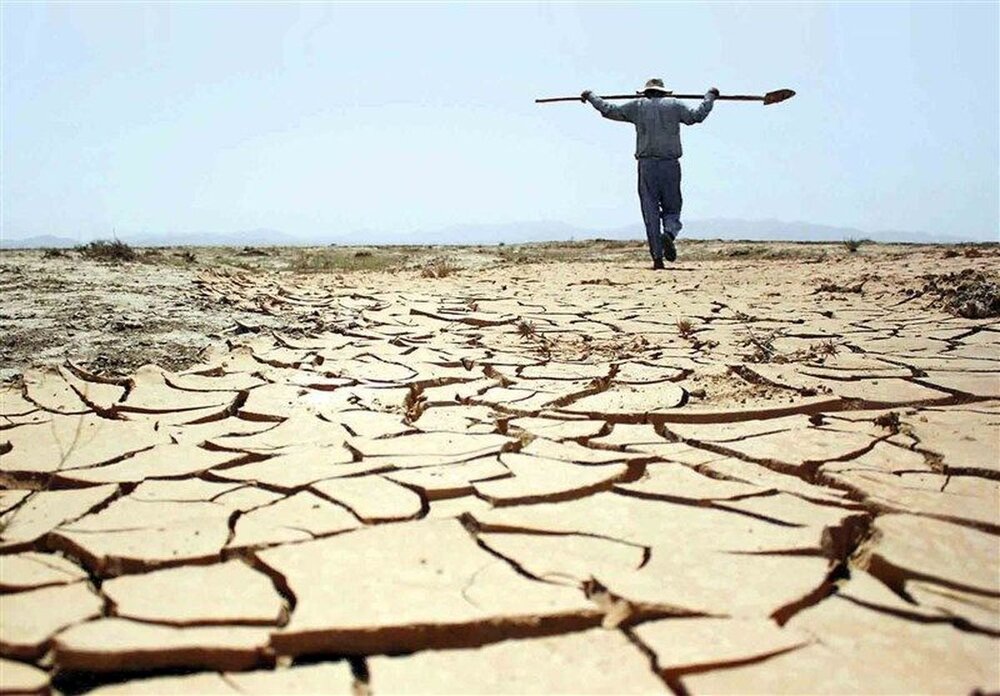Has Iran entered a 30-year dry spell?

TEHRAN – If the trend of rising temperatures and water consumption continues, the severity and effects of the drought will intensify, Ahad Vazifeh, head of the national center for drought and crisis management has said.
While rejecting the country’s entry into the 30-year dry spell, he said that drought is not limited to a 30-year or 10-year period, as rainfall has gradually declined over the past five decades.
The rainfall rate is still declining and has gone through a downward trend compared to the past 50 years; the precipitation does not decrease year by year, and there is a fluctuation in rainfall, he stated.
In general, according to statistics, the average rainfall in the country in the last 50 years has been 270 mm, which has decreased by 230 mm, in other words, over the past 5 decades, the average rainfall has dropped by 40 mm, he explained.
He went on to say that precipitation fluctuates. For example, last year the annual rainfall was 134 mm and this year it has increased by 156 mm compared to the previous year.
It cannot be said that we have entered a 30-year period of drought and that it will end. If the trend of rising temperatures and water consumption continues, the severity and effects of the drought will intensify.
In addition to drought, we are also facing the issue of rising water consumption, and even if the rainfall was normal, there was still a shortage of water. Nature does not have the ability to supply water to humans, he further lamented.
Drought causes $107m damage to environment
Drought has so far incurred a loss of 28 trillion rials (about $107 million) to the environment, Hassan Akbari, deputy head of natural environment and biodiversity of the Department of Environment, said on May 8.
In April 2021, the Iranian Meteorological Organization warned of an "unprecedented drought" and rainfall levels that were substantially below long-term averages. Unfortunately, over 70 percent of the country is suffering from severe drought. The severity of the drought is devastating in areas such as the Zagros, which is both a source of water and natural habitats, he lamented.
Perhaps the first and most important damage of drought is the weakening of vegetation, which seriously disrupts the wildlife food chain.
Iran faces a range of environmental challenges from high temperatures, pollution, flooding, and vanishing lakes. In April 2021, the Iranian Meteorological Organization warned of an "unprecedented drought" and rainfall levels that were substantially below long-term averages.
From the beginning of the current crop year (September 23, 2021) until April 18, precipitation has dropped by 29 percent compared to a year ago, Sadeq Ziaeian, director of the national center for drought and crisis management, affiliated with the Meteorological Organization, said.
The precipitation rate during autumn (September 23-December 21, 2021) was not very favorable, as the Meteorological Organization has considered this autumn one of the driest seasons in the past 50 years.
Overall, the rainfall rate during the current water year is not yet favorable, as it is 15.5 percent lower than normal averages.
According to the World Meteorological Organization's multiannual forecast, in the next five years, Iran’s average rainfall will decline by 75 percent, and the temperature rises by 50-75 percent compared to the long-term average.
4.8 million people at medium to high risk of drought
The amount of rainfall in Iran's main river basins from September 2020 to July 2021 was, in most places, substantially lower compared with the year-earlier period. Iran experiences frequent droughts and faces the prospect of more extreme conditions brought about by climate change.
According to current assessments, parts of Iran are facing a rainfall anomaly which has had an observed impact on vegetation and agriculture. Of particular concern is that these drought impacts have been observed in northeastern Iran in areas bordering Afghanistan.
The Iranian Red Crescent Society estimates that 4.8 million people are at medium to high risk of drought-related impacts, mostly in remote and rural areas of the provinces.
It reports that 29 of 31 provinces, and especially seven – South Khorasan, Kerman, Sistan-Baluchestan, Hormozgan, Khuzestan, Isfahan, and Khorasan Razavi – have been severely affected by the drought. The lack of safe and sufficient water supply for drinking, hygiene, agriculture, animal husbandry, and electrical power is having a devastating and increasingly unsustainable strain on households’ health, and income in addition to encouraging negative social trends and coping mechanisms.
FB/MG
Leave a Comment